One of the most fascinating ancient Roman markets, Trajan's market was the first shopping Mall in history. It was built in Rome between 107-110 CE (Common Era, After Christ). Located just opposite to the Colosseum, here food and other goods were sold and distributed.
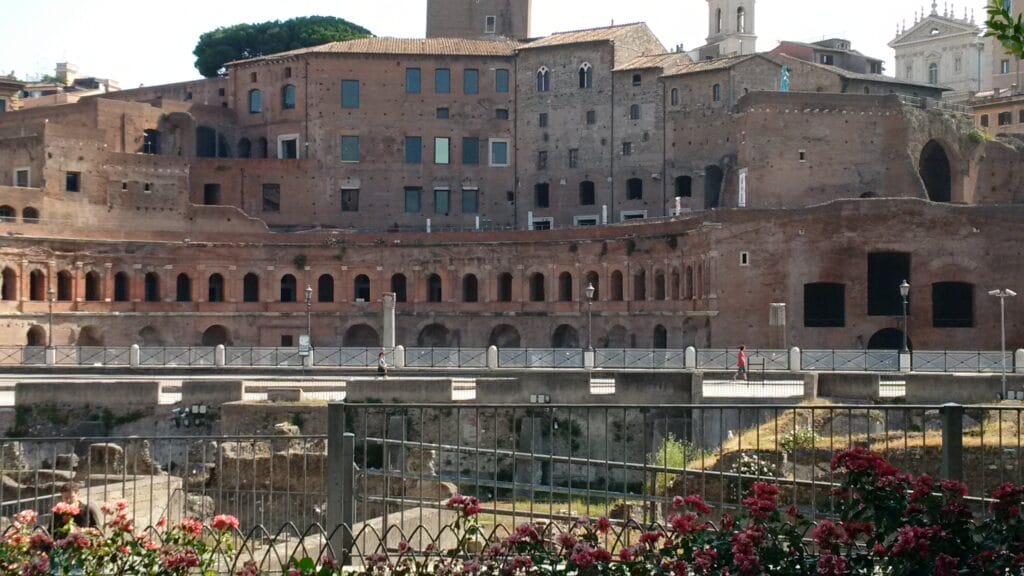
Jump to:
Find my recommendations of authentic Italian cooking books translated into English in my Amazon shop section: Cooking Books
To find out more how Italian food tradition changed throughout history you can read the article: Italian food history and cultural influence.
Markets during the Roman Empire
Market squares were found in both Greece and Rome, but large covered farmer's markets, similar to our modern Supermarket and with the sole purpose of selling foods, originated in Rome.
These farmer's markets were called Macellum, a word that is still in use in the Italian language today but refers only to slaughterhouses.
The Trajan market was not only a shopping center, but it was also a multilevel offices complex from where Trajan's empire administration was managed.
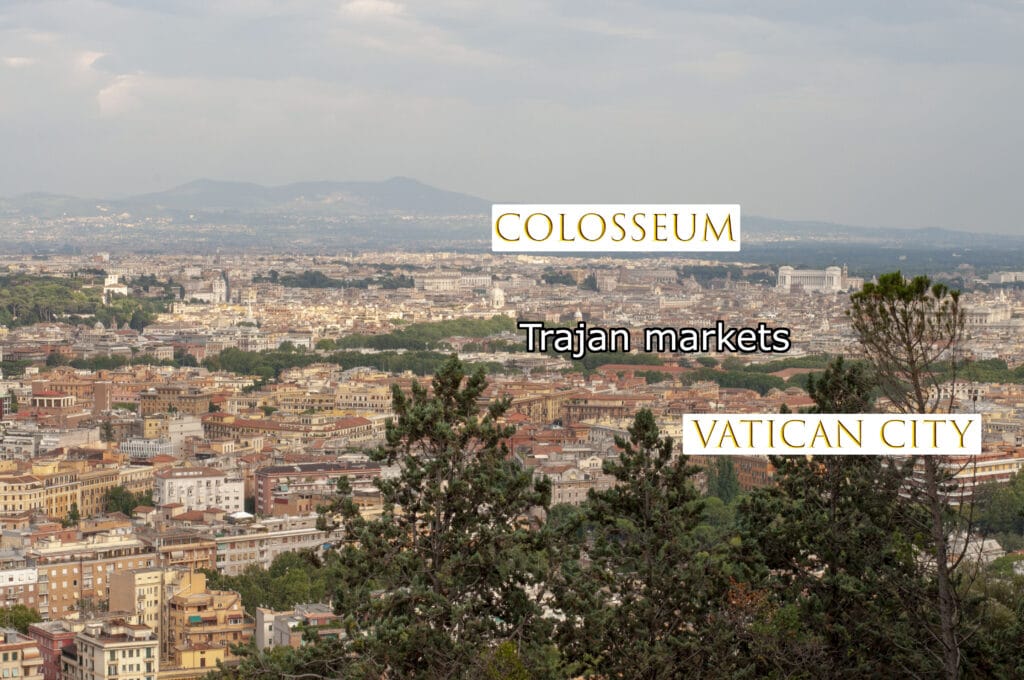
The structure was so well designed that was used even after the fall of the Roman Empire. This is why it is well preserved and still stands today.
You can really appreciate the advanced Roman technology skills that allowed to build complex structures in brick and concrete. The Architect was Apollodoro di Damasco.
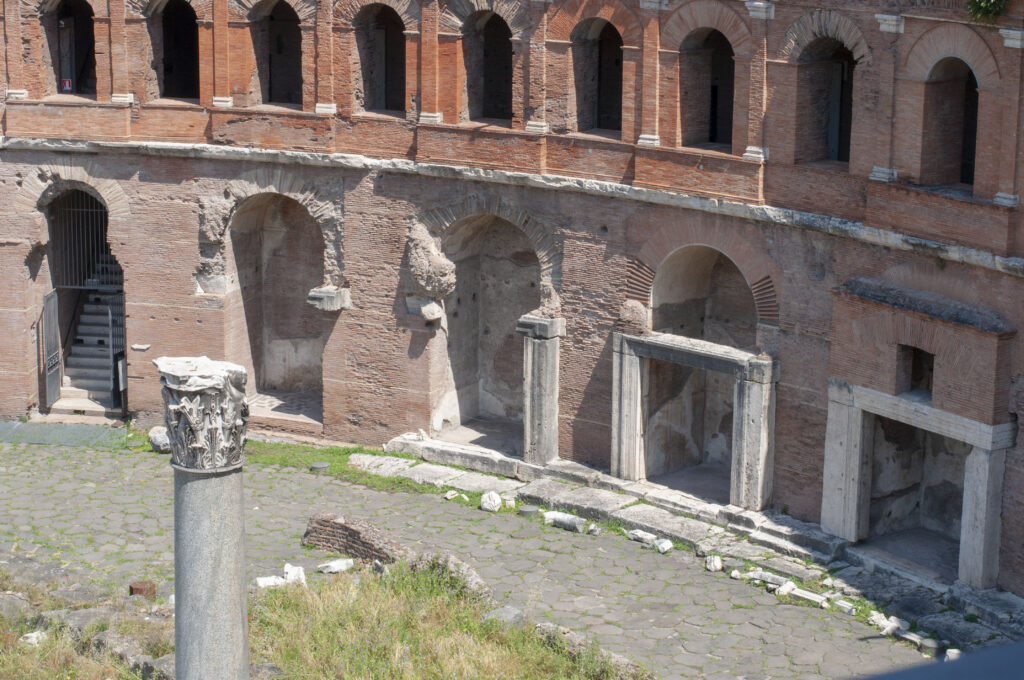
Who was Trajan
Trajan was a Roman Emperor from 98 to 117 CE. Born in Spain (modern Seville) he was the first non-Roman Emperor, chose as his successors by Nerva.
Trajan had a brilliant military career and was nominated consul by Nerva predecessor Domitian and the governor or upper Germany by Nerva himself.
Nerva did not have any heir son, and since he needed military support, he strategically decided to adopt Trajan and make him his successor.
Trajan had an excellent reputation, and with his military success expanded the Roman Empire to its largest territorial reach.
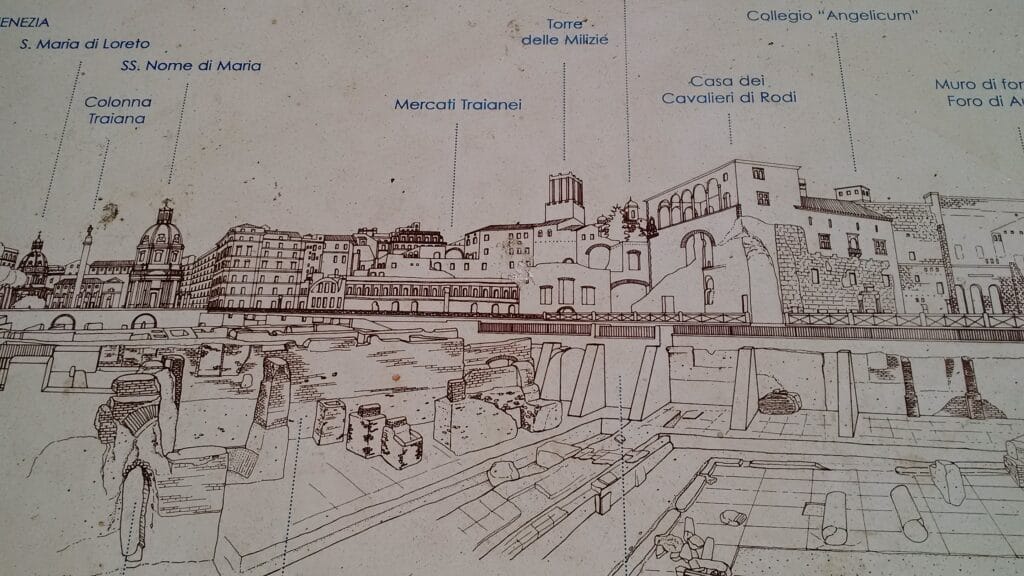
His biggest success was in 102 when he conquered Dacia territories, the modern region of Transilvania in Romania.
This victory gave him access to Dacian gold mines and he invested the wealth looted during the battles to build public service and funding welfare.
In Rome, just opposite to the Colosseum, he built the Trajan Forum, the Trajan Column and the Trajan Markets: the first covered shopping mall in history.
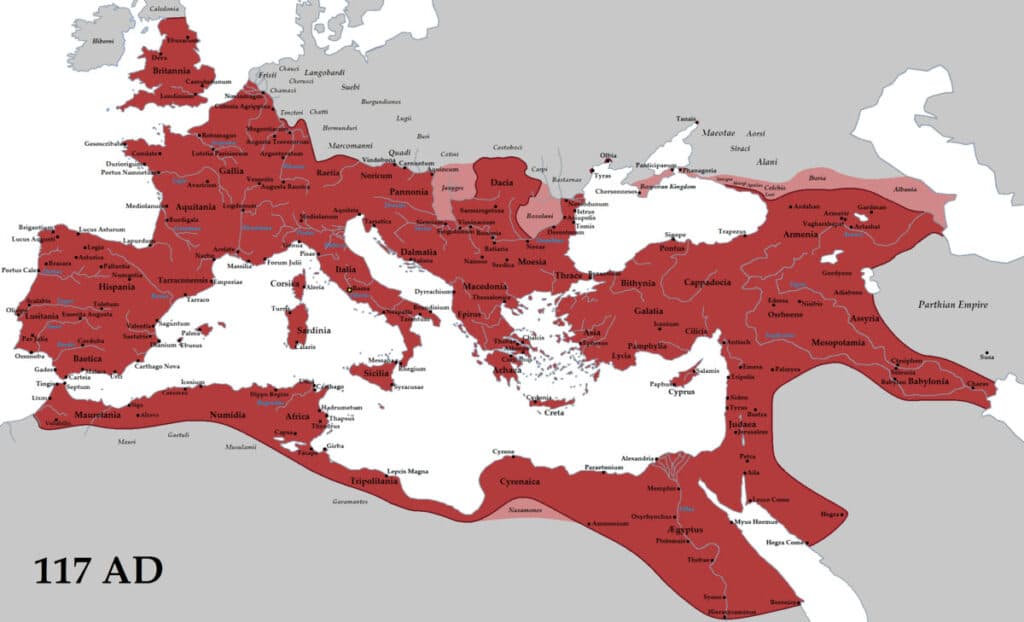
A futurist structure
These ancient Roman markets were built between the Trajan Forum and the Quirinale by cutting the slopes of the hills and support it with a structure of 6 floors connected by the staircase.
- The 3 lower levels are a sequence of Taberne, shops. The Grande Emiciclo luxuriously decorated with marbles and two large rooms at each end, probably used for concerts.
- The 3 top levels served by Via Biberatica, Bibe meaning drink, so clearly a street full of what we now call cafes and bars.
- The Copro Centrale on top was probably hosting public administrative offices
- North of Via Biberatica was the Grande Aula used for official ceremonies.
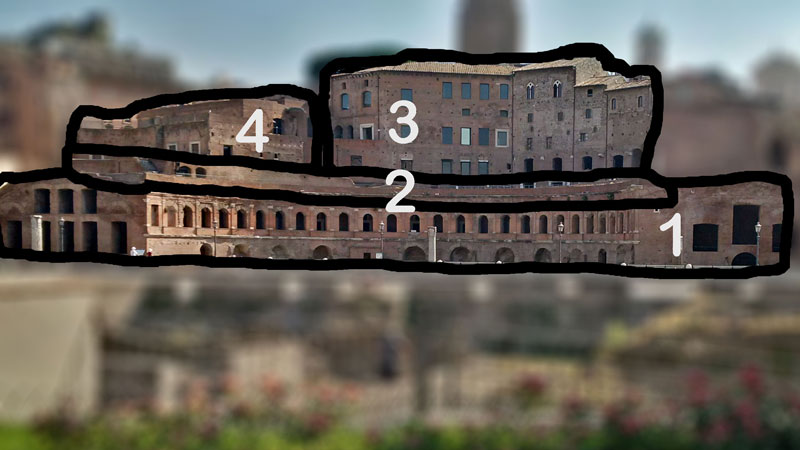
There is a central arch with six groin vaults that allowed air to circulate and each shop/room a window that lets the light inside. No doubt that they were for commercial use.
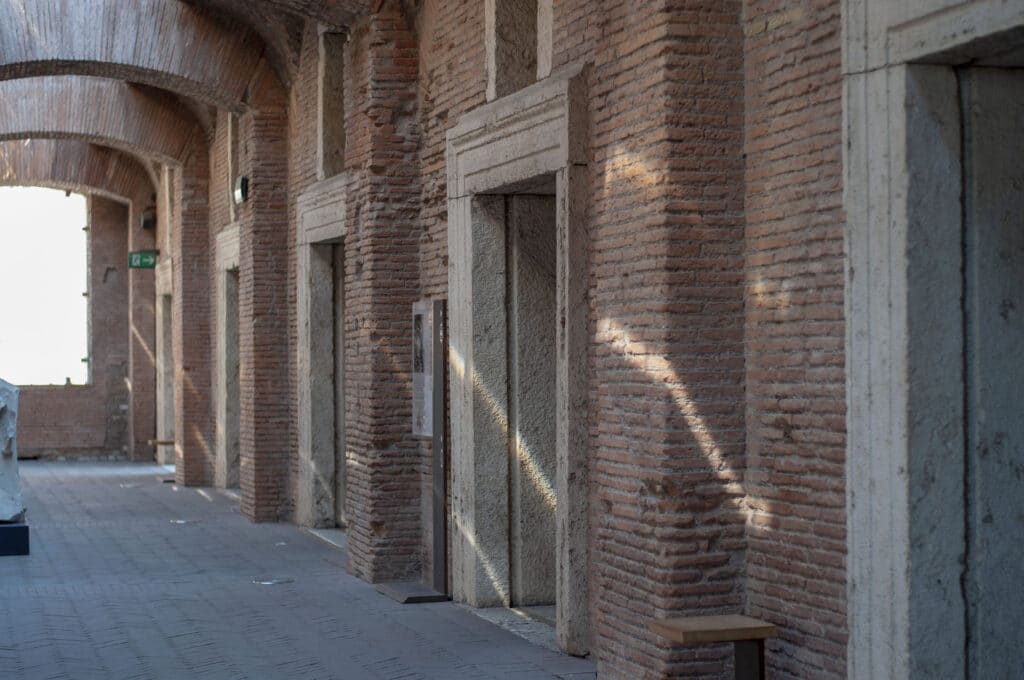
Roman food welfare
In these tabernes, Cura Annonae (free grain) was supplied to Roman in honor of their Godness Annona. It was produced in the South of Italy and shipped into the Harbor of Ostia.
In fact, the land around Rome was populated by Aristocratic villas and fields mainly cultivating perishable fruits and vegetables.
Rome was therefore dependent in importing grain to supply its entire population.
The distribution of grain had an important strategic position and was managed by Aedile which was a public body responsible for all the public buildings and the festivals.
Trajan also formalized the Alimenta, which was a welfare program to help orphans and poor children providing food and free education. This also was financed by the conquest of Dacia, but the benefit was given only within the Italian region.
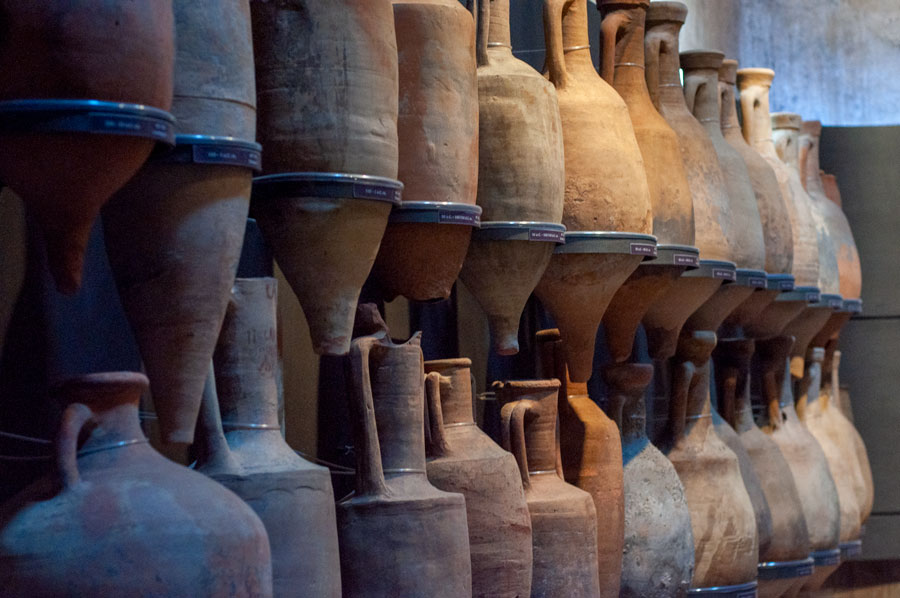
More about Roman food and its markets
So what else was sold in those ancient Roman markets Taberne?
- Macellum: farmer markets
- Forum Piscarium: Fishmarket
- Forum Cuppedinis: a market for voluptuous goods
To find out more about what Romans ate and some of the recipes, you can read the article: Ancient Roman Food And Recipes.
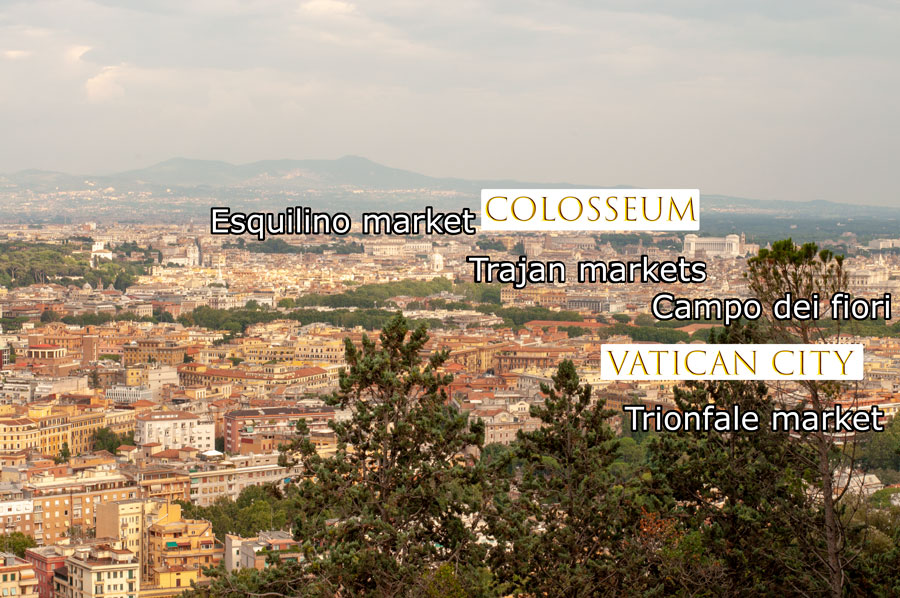
Moving forward through history you can find more information about the development of Rome and its markets on the article: A Historic Walk Through The Charm Of Romans Market.
More history about Italian cuisine in the article: Traditional Italian Recipes By Region
Hope you find this article helpful, please if you have any questions, write them in the comments below and I will be happy to respond and help. For more information, you can visit the category: Italian food traditions. You can find delicious ideas if you FOLLOW ME on Facebook, YouTube, Pinterest and Instagram or sign up to my newsletter.

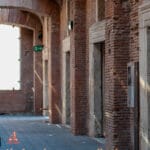
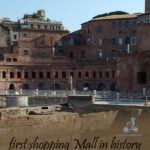
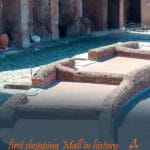
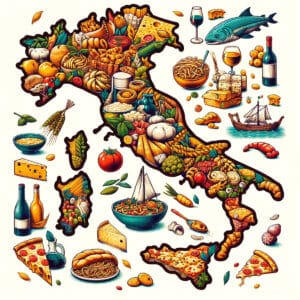
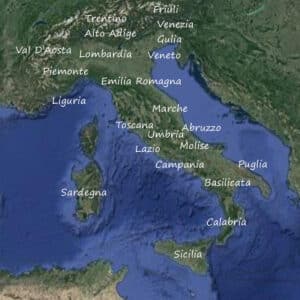
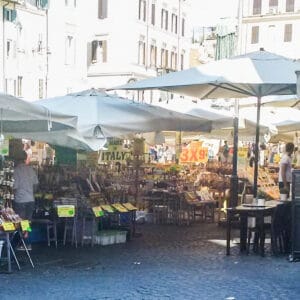
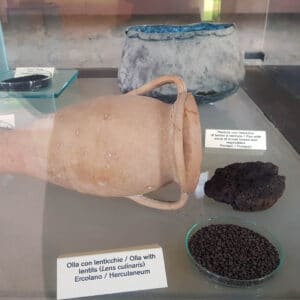
Beth
This is q fascinating read! I can't wait to go and see it in person!
Laura
Thank you, it is quite amazing
Elaine
What a great article Laura. When hubby and I were in Rome, we didn't see that building. We saw the Colosseum but not the market. Next time we're there, we'll need to go by it.
Laura
Ah, too bad. It is at the other end of the road from the Colosseum. My university was right there so I know the area very well.